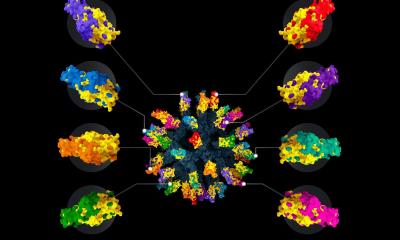News • Viral reproduction
A perfect shelter: How ebola lives on in the eyes of survivors
Researchers have found a clue to how the ebola virus may remain in the eyes of patients suffering from uveitis – one of the more serious and common complications of the disease. The eye now joins the testes as a location where live Ebola virus can be found up to one year post-infection. A new study, describes how the cells responsible for isolating the eye from the immune system, known as immune privilege, may also prevent clearance of the virus from infected tissue. The study drew on information gained from observations in Sierra Leone where one in four Ebola survivors suffer from uveitis, or inflammation inside the eye, a condition that can result in vision loss or blindness. Sierra Leone was one of the strongly affected countries after an ebola epidemic hit West Africa three years ago.

Subdued immune response accountable
The international and interdisciplinary team of investigators, led by Justine Smith, Franzco, PhD, Matthew Flinders Distinguished Professor of Ophthalmology at Flinders University School of Medicine in Australia, introduced live Ebola virus to RPE cells in vitro. The scientists observed the virus readily replicated in the cells, while the cells continued their native function of expressing molecules that limit the ability of the immune system to fight infection. The resulting subdued immune response may be responsible for the persistence of live virus in the eye. Following these results, “there are so many questions that we can pursue,” said Smith. “One is understanding why some Ebola survivors harbor the virus and develop uveitis, while others do not. That answer should help us better understand the mechanisms of post-Ebola eye disease, as well as provide some leads on how to manage it.”
You can find more information about the study here.
Source: Association for Research in Vision and Ophthalmology
18.07.2017











